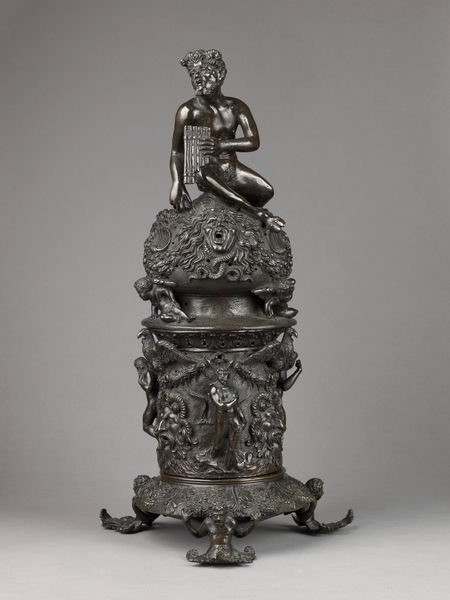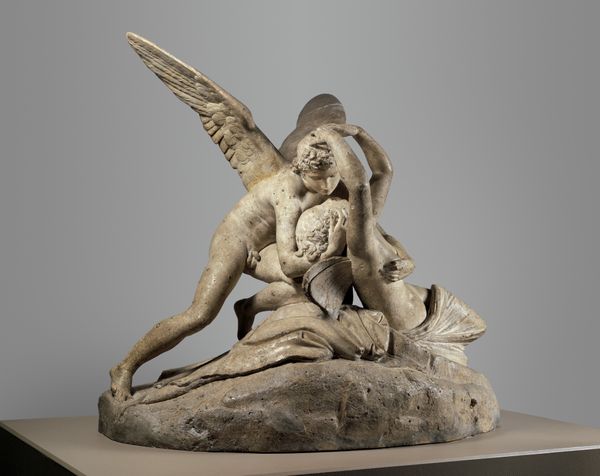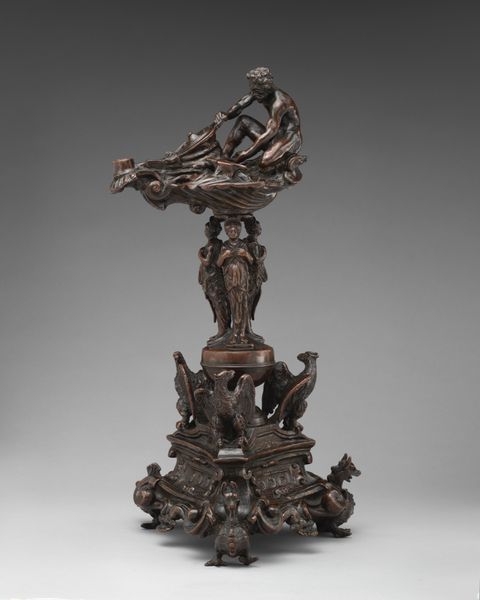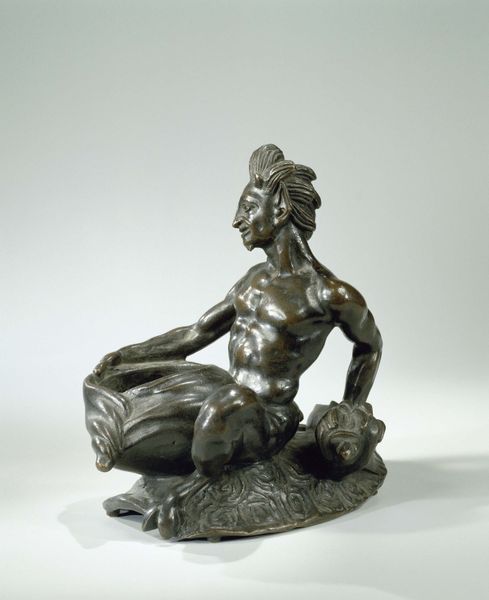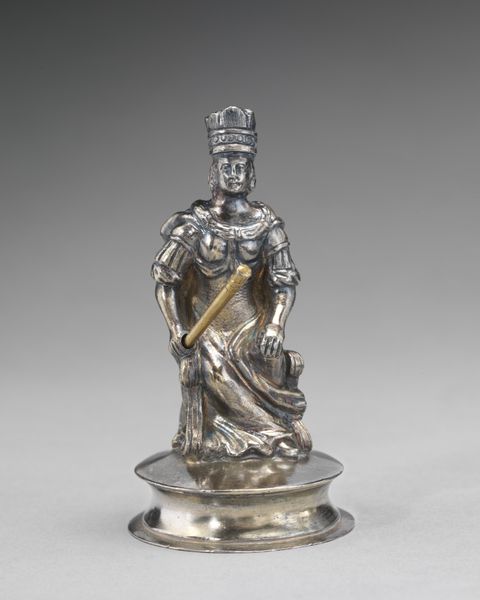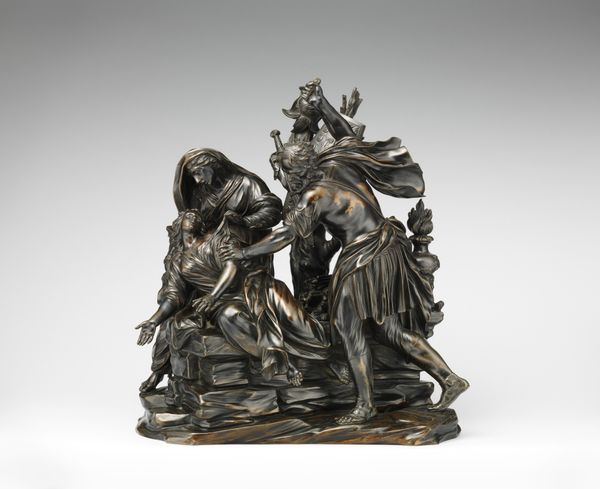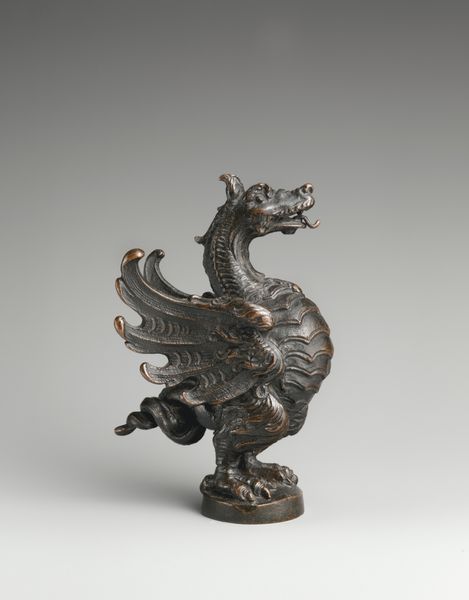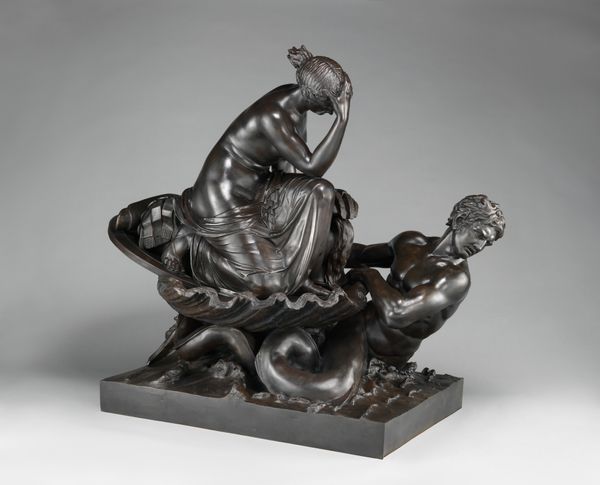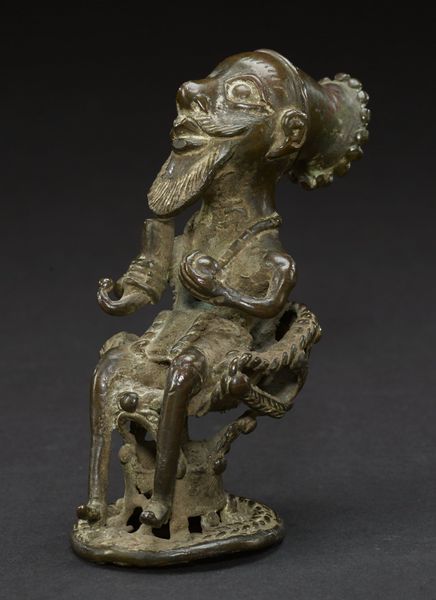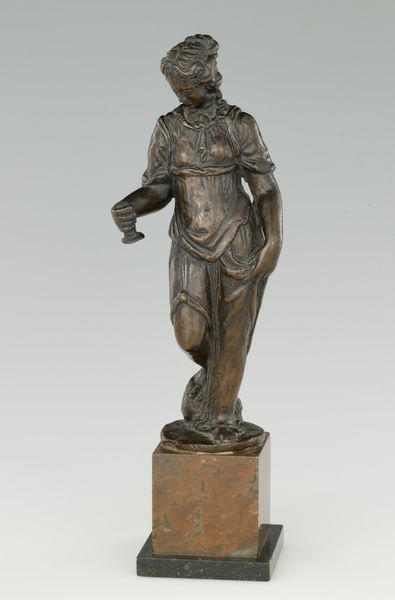
bronze, sculpture
#
stone
#
sculpture
#
asian-art
#
bronze
#
figuration
#
sculpture
Dimensions: 9 × 6 11/16 × 3 5/8 in. (22.86 × 16.99 × 9.21 cm)
Copyright: Public Domain
Curator: This striking bronze sculpture, titled "Hayagriva," dates from around the 18th century and resides here at the Minneapolis Institute of Art. Editor: My first impression is one of dynamic tension. There's a beautiful contrast between the static quality of the bronze itself and the implied movement within the figure's many arms and complex features. Curator: Precisely. "Hayagriva" represents a wrathful manifestation of Avalokiteśvara, the bodhisattva of compassion. In Tibetan Buddhism, Hayagriva serves as a powerful protector, particularly against negative forces hindering enlightenment. He’s often invoked for healing and overcoming obstacles, so the implied violence must be contextualized within this role. Editor: Absolutely, the surface is also quite beautiful; the subtle shifts in patina highlight the complexity of its form, almost like chiaroscuro. Looking at how the light plays across the numerous arms and the ferocious faces, the sculptor has created such detail and dynamism. Curator: We can understand this sculpture, then, as embodying complex power dynamics, representing both subjugation of chaos and protection of the faithful. The multiple arms, each holding symbolic objects, and the garland of severed heads contribute to this expression. One could argue that he's a statement of intersectionality. Editor: Intereseting! But wouldn't you say that such attributes add not just symbolic weight but compositional depth as well? Consider how each element, carefully arranged, directs the eye through the sculpture and emphasizes his imposing presence. The horse head emerging from his crown... what about that? Curator: The horse head emerging from the flames in his hair, that is, a signature element that symbolizes his untamed energy and power. In essence, Hayagriva challenges conventional notions of beauty, urging us to find strength in destruction and protection in wrath. Editor: So, in essence, from an art historical context, Hayagriva encourages dialogue. Curator: It absolutely situates this bronze within complex layers of symbolism and meaning, prompting reflection on the relationships between power, compassion, and the path to enlightenment. Editor: And I find in its details just such beautiful intricacies of craftsmanship. Thank you.
Comments
minneapolisinstituteofart almost 2 years ago
⋮
In Tibetan Buddhist practice, buddhas and bodhisattvas can express benevolent and wrathful sides. Hayagriva is a wrathful emanation of Avalokiteshvara, the bodhisattva of compassion. Shown in yamyum (sexual embrace, or “father mother”) pose, Hayagriva represents compassion, and goddess Nairatmya represents wisdom. The couple’s union symbolizes the essence of enlightenment, accessed by a Tibetan Buddhist through concentrated meditation on such a deity. Hayagriva is identified by the two horse heads neighing from his hair. He holds a skull cup and a curved knife, and he wears a garland of severed heads and flayed tiger skin. An unusual three-tiered arrangement of three heads, their faces baring fangs and bulging eyes, all topped with skull tiaras, underscores his wrathful nature. Dramatic wings evince the deities’ supernatural powers. These terrific features express Hayagriva’s ability to convert anger into insight as well as his fierce determination to assist devotees to overcome their attachments and illusions.
Join the conversation
Join millions of artists and users on Artera today and experience the ultimate creative platform.
